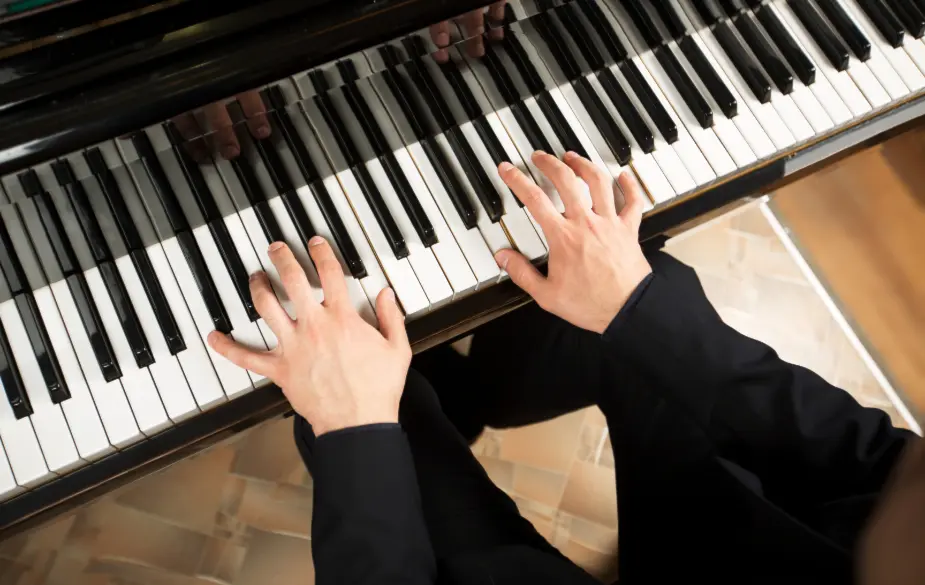15 October 2024
|
Finger independence is an important skill that allows you to navigate the keyboard with precision and fluidity.
The ability to move each finger independently, while maintaining control and strength, helps in tackling complex pieces, intricate runs, and dynamic phrasing. Achieving finger independence doesn’t happen overnight—it requires consistent practice and targeted exercises. In this blog, we will explore various finger independence exercises and techniques that can help you strengthen your finger independence and control.
Why is finger independence important for pianists?
Finger independence is key to developing a strong piano technique. Without it, playing moderately complex pieces can be frustrating. Pianists often encounter passages where their fingers need to move in different directions or play different rhythms. For example, in counterpoint or polyphonic pieces, each hand and finger may be required to play separate, independent parts. Without proper finger control, achieving clarity and precision becomes impossible.
Good finger independence helps with:
- Playing scales and arpeggios with evenness and speed.
- Articulating chords and melodies distinctly.
- Executing intricate passages in classical, jazz, or contemporary music.
- Reducing tension and avoiding hand fatigue.
Now, let’s dive into specific techniques and finger independence exercises that can significantly enhance your playing.
The basics of finger independence: warming up
Importance of warming up before practising
Before diving into finger independence exercises, we suggest warming up your hands and fingers. Proper warm-ups prevent injury and help increase blood flow to the muscles, making your fingers more flexible and responsive. Begin by gently stretching your hands, wrists, and fingers.
Try this warm-up:
- Hold your hand out, palm facing down.
- Gently press each finger down with your opposite hand, feeling a light stretch in the finger muscles.
- Hold each stretch for 5-10 seconds.
- Rotate your wrists slowly to loosen them up.
Once your fingers feel more relaxed and limber, you are ready to move on to finger independence exercises.
Top finger independence exercises for pianists
1. Hanon exercises for finger independence
The Hanon exercises are a staple in the piano world for building finger strength, dexterity, and independence. These exercises focus on repetitive finger movements, helping you to isolate each finger's action.
One of the most popular exercises from Hanon is Exercise No. 1, which involves ascending and descending finger patterns across the keyboard. Here’s how you can practise it:
- Begin with your right hand in the C major position.
- Play the first five notes of the C major scale with fingers 1 to 5 (thumb to pinky).
- After reaching the 5th note (G), cross your thumb under to play the next higher C.
- Continue the pattern across the keyboard, focusing on keeping each finger even and controlled.
- Repeat the exercise with your left hand.
This exercise promotes even finger movement and allows you to focus on the individual action of each finger.
How to practise Hanon for maximum effectiveness
- Start slowly, paying close attention to each finger’s movement.
- Ensure that all fingers are striking the keys with equal force.
- Gradually increase the speed as you become more comfortable.
- Practise with both hands together, and then try the exercise hands separately.
2. Scales and arpeggios for finger control
Playing scales and arpeggios is a fantastic way to develop finger independence while building familiarity with different key signatures. Focus on evenness, control, and articulation.
For scales:
- Play through all major and minor scales using a metronome.
- Concentrate on smooth finger transitions, especially when crossing the thumb under or over.
- Use various rhythms—play scales in triplets, dotted rhythms, or with accents on different beats to challenge your finger coordination.
For arpeggios:
- Play arpeggios in different keys, focusing on clarity and precision.
- Practise both hands together and separately to isolate finger movement.
- Gradually increase the tempo, but ensure that each note is clearly articulated.
How scales and arpeggios benefit finger independence
- Finger crossing in scales promotes flexibility and coordination.
- Arpeggios demand precise finger control, especially when played at high speeds.
- Practising scales and arpeggios also enhances finger strength and endurance, essential for difficult repertoire.
3. The “4-5” finger independence exercise
The fourth and fifth fingers are often the weakest in a pianist's hand, so targeting them with specific exercises can definitely improve finger independence. Here’s a simple yet effective exercise:
- Place your right hand on the keyboard in a relaxed position.
- Press down the 1st, 2nd, and 3rd fingers (thumb, index, and middle) so they are holding down keys.
- Practise lifting and pressing down just your 4th and 5th fingers without moving the other fingers.
- Repeat this exercise for your left hand, focusing on lifting your 4th and 5th fingers independently.
This exercise isolates the weaker fingers and improves their independence, which is crucial for playing complex piano passages.
Variations to increase difficulty
- Try alternating between lifting just your 4th finger and just your 5th finger.
- Increase the tempo as you gain control.
- Apply this exercise to different parts of the keyboard.
4. Finger independence through rhythmic exercises
Rhythmic exercises are another effective method for building finger control and coordination. They challenge your brain to think in multiple rhythms, forcing your fingers to move independently.
Example Exercise:
- Choose a simple five-note pattern to play with one hand.
- Play the same pattern in your other hand, but shift the rhythm—play one hand in triplets and the other in straight eighth notes.
- Switch the rhythm between hands to challenge your coordination.
- Focus on maintaining independence between the hands while staying in time with the metronome.
How rhythmic exercises build finger independence
- These exercises force your fingers to break out of habitual, synchronized movements.
- They improve coordination between hands and help in playing complex polyphonic music.
5. Finger tapping exercises
Finger-tapping exercises on a flat surface (like a table) are great for improving independence without the distraction of playing notes. Here’s how you can do it:
- Place your hand flat on a table.
- Lift one finger at a time while keeping the others relaxed on the surface.
- Focus on lifting and lowering each finger smoothly and independently.
- Repeat with both hands, and increase the speed as you improve.
This exercise encourages isolation of finger movements and helps improve the articulation of the ‘weaker’ fingers.
Incorporating finger independence into your daily practice routine
Building finger independence consistently
Improving finger independence requires daily attention and patience. Incorporate these exercises into your warm-up routine for 10-15 minutes each practice session. Gradually increase the difficulty and speed as your fingers become more independent and controlled.
Final tips for success
- Consistency is key: Practise these exercises regularly for the best results.
- Start slow: Ensure accuracy and control before increasing speed.
- Use a metronome: It helps you maintain rhythm and control during exercises.
- Stay relaxed: Avoid unnecessary tension in your fingers, hands, and arms.
- Monitor progress: Record yourself occasionally to track improvements.
Finger independence is a skill that will benefit pianists of all levels. By incorporating these exercises into your practice, you'll gain greater control, precision, and flexibility, allowing you to tackle more advanced pieces with confidence and ease.
Looking for further tips on techniques such as posture, pedalling, repeated notes, arpeggios, hands separate practice, fingering and more? Check out the Piano lessons we have available on our website.
Improving finger independence requires time, patience, and the right approach. By focusing on finger independence exercises like Hanon, scales, arpeggios, and targeted finger tapping, you’ll be well on your way to developing stronger, more controlled fingers at the piano.







